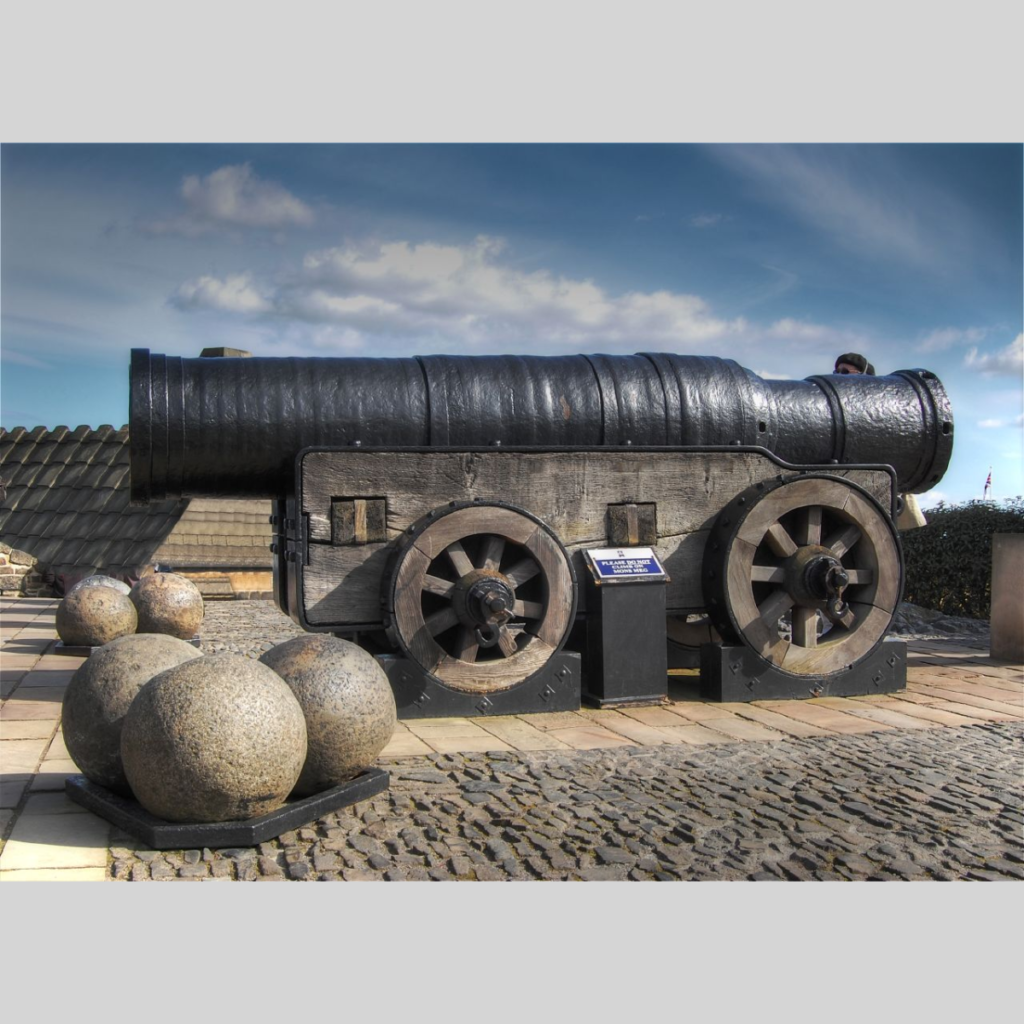

This six-tonne siege gun is what cutting edge military technology once looked like. Mons Meg could fire a 150kg gunstone for up to 3.2km (2 miles). She was one of a pair of giant iron cannons given to James II in 1457 by Duke Philip the Good of Burgundy. Her name is taken from the Belgian town of Mons, where she was made in 1449 – at a cost of 1,536 pounds and 2 shillings. ‘Meg’ was added only later, in the 17th century.
Mons Meg was so heavy that even a team of oxen couldn’t move her more than 5km (3 miles) a day. So it was quite a feat when, in 1460, James II had her hauled 80km (50 miles) to the siege of Roxburgh Castle. But the unlucky king was killed there when another of his cannons exploded.
James IV put Mons Meg back in action, first to attack Dumbarton Castle (in 1489) and then Threave Castle and Norham Castle (both in 1497). She ended her fighting days in James V’s navy, retiring around 1550. Oliver Cromwell would later refer to the gun as the “great iron murderer called Muckle Meg” when he captured Edinburgh Castle in 1650.
When Mary Queen of Scots married in 1558, Mons Meg fired a gunstone over the city in celebration: it landed in what is now the Royal Botanic Garden. She fired her last salute in 1680, to mark a visit to Edinburgh by James Duke of York. Her barrel finally burst in 1681.
Mons Meg spent 75 years in England, on display at the Tower of London. The Tower’s 1821 guide said of the cannon, “it is of such amazing dimensions that a man may go into its mouth”. She made her welcome return to Edinburgh Castle in 1829. Cavalry and infantry escorted her from Leith Docks to Castle Rock.
A new timber and iron carriage was made for the gun in 1934. Mons Meg is on loan from the Board of Trustees of the Royal Armouries.